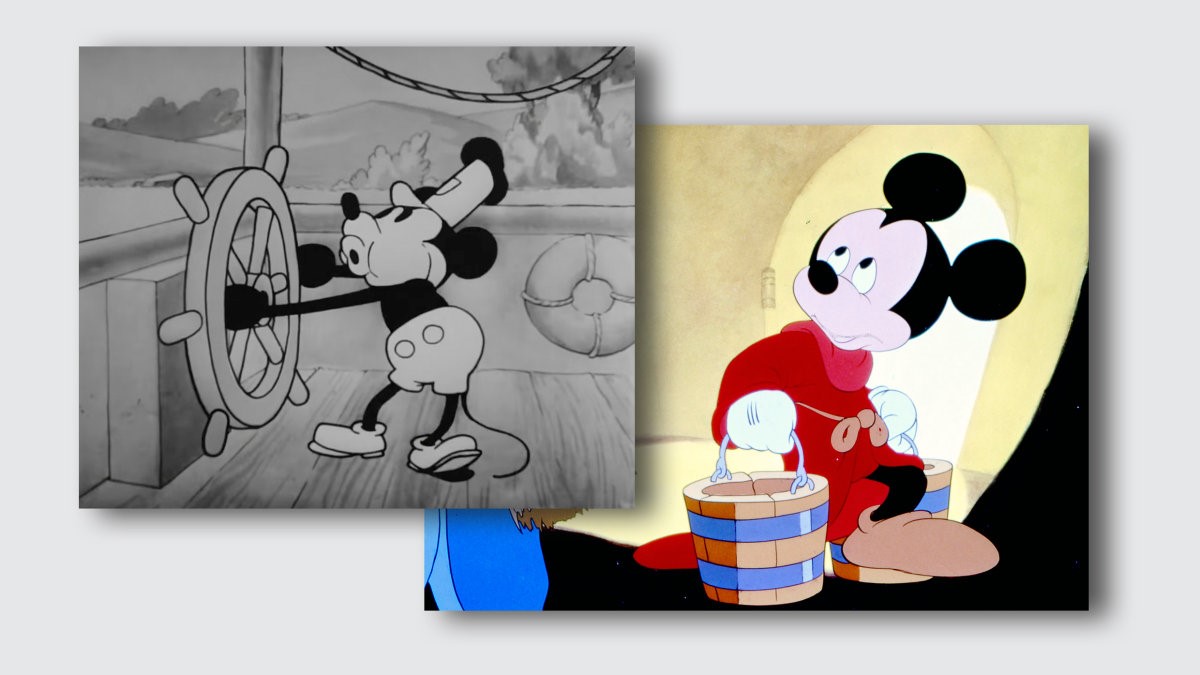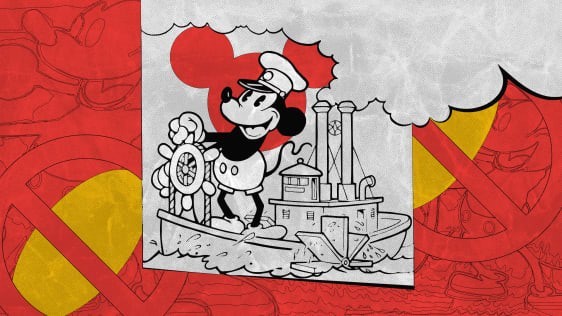What you can and can’t do with Mickey Mouse now
After 95 years of fierce copyright protection, Mickey Mouse is officially in the United States public domain. It’s only been five days since the copyright expired, and already, Disney’s iconic mouse has appeared in horror movie and video game trailers, wild memes depicting Mickey stirring the Titan submersible, and even an AI generator trained on 96 stills from 1928.
But not so fast. Just because Mickey is in the public domain doesn’t necessarily mean you get to turn his image into a manga or slap it on a T-shirt. Mickey (and Minnie!) first appeared in 1928 in the cartoon film, Steamboat Willie. As of January 1 this year, Steamboat Willie entered the public domain. This means that anyone can share, adapt, or remix the characters portrayed in the cartoon—but there are numerous caveats and nuances to keep in mind.
The only version of Mickey that is currently in the public domain is the one depicted in Steamboat Willie—a vastly different character than what is seen in later Disney films. In Steamboat Willie, Mickey has small black ovals for eyes; by 1940 (in Fantasia), Mickey’s eyes have evolved into large white ovals with pupils. In Steamboat Willie, Mickey has no gloves; as of 1929, he does. In Steamboat Willie, Mickey is rendered in black and white; in 1935, he is colorized.

Technically, later versions of Mickey are still under copyright, but you have some room to play with the character seen in Steamboat Willie. Jennifer Jenkins, director of the Duke Center for the Study of the Public Domain, wrote in a blog post that “not every feature of Mickey’s later iterations is individually copyrightable.” Giving your mouse a squeaky voice is not copyrightable she says, so your version of the mouse can speak however you like. Giving your mouse a certain kind of personality is also not copyrightable—hence horror-movie-Mickey.
The plot thickens a bit when it comes to a color scheme. In Steamboat Willie, Mickey is portrayed in black and white, but Jenkins explains you don’t have to stick to a monochrome palette. “I’d really be interested in a poll of copyright experts on this one,” she told me in an email. “It’s not clear when a color palette by itself meets the threshold requirements for copyrightability.”
For example, a fully colorized poster from 1928 shows Mickey Mouse wearing red shorts, brown boots, and yellow gloves, but Jenkins notes it’s not clear whether the poster was published for copyright purposes, so we can’t confirm whether this version of Mickey is fair to use. If you want to be cautious, Jenkins advises steering clear of the full-color palette, but you are welcome to create your very own color palette.
The same thinking applies to Mickey’s gloves. As Jenkins points out, Mickey donned gloves in 1929, so in 2025, you will definitely be able to put gloves on him. But for now, Jenkins isn’t sure if putting gloves on the character, or even adding red on the shorts, is even copyrightable. “I think there’s a good argument that just putting gloves on a cartoon character falls short of this standard, so adding gloves is fair game,” she says. Then adding, “You might be able to find experts who disagree.”
On a separate note, Disney’s copyright of 1928-era Mickey has now been lifted, but it is still trademarked by Disney. This doesn’t preclude you from incorporating Mickey 1.0 into your work. It just means that you can’t use Mickey 1.0 if it is likely to mislead consumers into thinking a product is made or sponsored by Disney. “Trademark law is all about preventing consumer confusion—and not about getting in the way of creativity—so it depends on whether people are likely to be misled about the source of your cartoon,” Jenkins explains. “As long as no one thinks it is a Disney joint, there should not be a trademark problem.”
In other words, you can’t sell merch with a Mickey Mouse logo as consumers might think you are offering a Disney-sponsored product. You also can’t slap a Mickey Mouse logo at the start of an animated movie as consumers might think the movie was produced, endorsed, licensed, or approved by Disney—and be misled about the source of sponsorship of the movie.
What you can do, is make it abundantly clear at the outset that your work has absolutely nothing to do with Disney. Such a disclaimer may not be enough if you’re selling merch, but when it comes to new artistic works, it should suffice.
(21)



